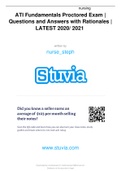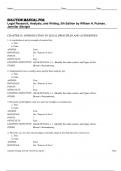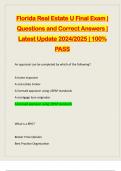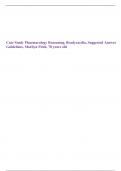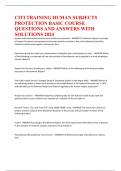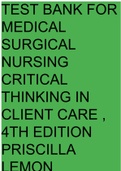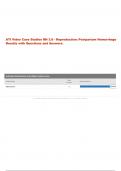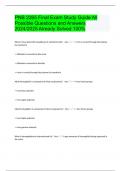Exam (elaborations)
Stuvia-909199-ati-fundamentals-proctored-exam-questions-and-answers-with-rationales-latest-
- Course
- Institution
ctivity C. Cleaning windows -incorrect: Cleaning windows is a moderate-intensity activity D. Washing dishes -Washing dishes requires a low level of activity and is appropriate for this client. 16. A nurse is caring for a client who is receiving dextrose 5% in water IV at 150 mL/hr and has ing...
[Show more]
